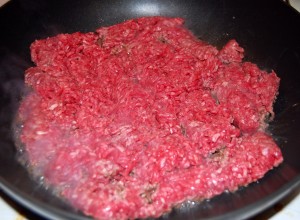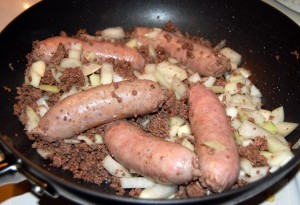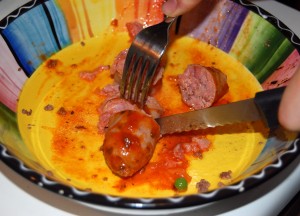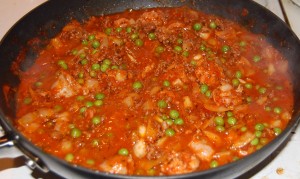Some interesting items this week:
(1) Peter’s back! And with a very interesting post about dogs with diabetes. One highlight:
[I]nsulin is normally produced by the pancreas and it travels directly to the liver. There is first pass metabolism by the liver, lots of it. The liver extracts between 50% and 80% of all of the insulin produced by the pancreas. Relatively little ever gets to the systemic circulation. This residue is what should be controlling adipocyte function.
This is why injected insulin is not as healthful as natural insulin – it acts too strongly on the rest of the body, not strongly enough on the liver. And it is why diabetics should eat a low-carb diet.
(2) In the comments, Doug linked to a 2009 paper [1] showing that eating blueberries with milk reduced the absorption into the body of the blueberry phenolics caffeic and ferulic acid. Doug wanted to know if this should cause him to stop eating his blueberries with cream.
I don’t think so! The greatest benefits from these berry compounds seems to come in the gut, where they act as toxins to pathogens and help promote beneficial gut flora. So if milk reduces their absorption, it must be increasing their presence in the gut.
Entry of these compounds into the body might even be harmful. Peter recently discussed two potential mechanisms by which berry compounds might be harmful: inhibition of the enzyme CETP, like the drug anacetrapib; and antioxidant activity which, paradoxically, increases oxidative stress by downregulating the body’s own natural antioxidants.
It’s hard to beat the delightful taste of berries and cream. Luckily this study gives us no reason to avoid them!
(3) A new study finds that vitamin A and mimics, such as the anti-acne drug Accutane, greatly amplifies inflammation in the bowels of people with food sensitivities. [2] This may be another reason not to supplement vitamin A.
(4) Kurt Harris offers a good breakfast tip for those who like cereal:
Rice Krispies have no added sugar. It’s just toasted white rice. A good sized bowl is maybe 40 g of starch, plus whatever lactose if you add H/H or milk.
(5) Melissa McEwen passes on from Kathryn Clancy the news that anemia is usually a sign of internal bleeding:
Iron-deficiency is not something you get just for being a lady: … Almost all doctors seem to think that iron-deficiency is part of being a woman, but that doesn’t make sense evolutionarily. Turns out, it’s no normal and doctors who think it is often miss the true cause, which is internal bleeding.
When I was a freshman college I had iron issues. Just like in the post my doctor gave me iron pills, which absolutely destroyed my stomach. Finally a better doctor found out I had a GI bleed. Now why do so many people get GI bleeds? In my case it was from taking NSAIDs, which is a fairly common cause.
(6) Across countries, higher disease burdens are associated with lower IQ. Here is a plot from Bill Gates’s annual letter:
There are many possible causes for this correlation, but none of them suggest it’s good to get a lot of infections.
(7) Jenny Ruhl tells us that colas – whether diet or sugared, it doesn’t matter – damage the kidneys and increase stroke risk. The culprit may be phosphoric acid.
(8) The New York Times reports that loneliness eliminates the benefits of exercise. You need to be sociable as well as athletic to achieve good health!
(9) Finally, our video of the week. Matt Brody enjoyed Rachel Albert’s salmon cake recipe. He used canned salmon, which reminded me of this classic advertisement:
References
[1] Serafini M et al. Antioxidant activity of blueberry fruit is impaired by association with milk. Free Radic Biol Med. 2009 Mar 15;46(6):769-74. http://pmid.us/19135520.
[2] Depaolo RW et al. Co-adjuvant effects of retinoic acid and IL-15 induce inflammatory immunity to dietary antigens. Nature. 2011 Feb 9. [Epub ahead of print] http://pmid.us/21307853.


















Recent Comments